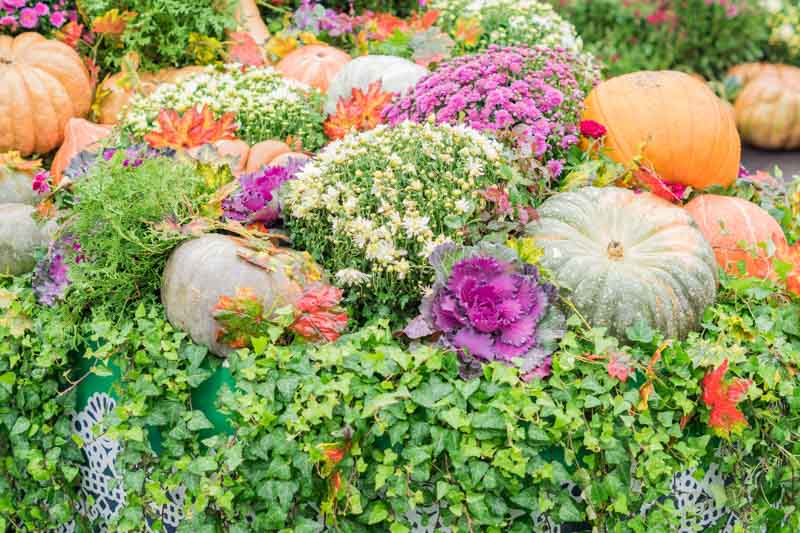If your chrysanthemum plant is showing discoloration, distorted growth, or wilted leaves, it might be facing issues like aphid infestation, fungal diseases, or nutrient deficiencies. Timely identification and appropriate treatment can help restore your plant's health and vitality.
Chrysanthemums, often called “mums,” are iconic fall-blooming plants known for their vibrant colors. They display a dense, bushy habit, making them ideal for both gardens and container plantings.
Originating from Asia, these perennials are hardy in zones 5-9, with some cultivars adapted for chillier climates. Their flowers present a spectacular range from sunny yellows to deep burgundies and from simple daisy-like petals to complex spider and pompom forms.
Beyond their ornamental appeal, chrysanthemums have traditional medicinal uses, especially in Asian cultures, where chrysanthemum tea is praised for its health benefits. Additionally, certain species have insecticidal properties, making them beneficial for natural pest control.
Culturally, they hold significant symbolic value representing longevity and rejuvenation. Whether you’re looking for a burst of color in autumn gardens, a natural remedy, or a means of pest deterrence, chrysanthemums offer a plethora of advantages.

To reduce the chance of these issues, practice good garden hygiene, ensure proper spacing, use resistant varieties when available, and monitor plants regularly for signs of problems.
| Hardiness |
5 - 9 |
|---|---|
| Heat Zones |
5 - 9 |
| Climate Zones | 2, 2A, 2B, 3, 3A, 3B, 4, 5, 6, 7, 8, 9, 10, 11, 12, 13, 14, 15, 16, 17, 18, 19, 20, 21, 22, 23, 24, H1 |
| Plant Type | Annuals, Perennials, Shrubs |
| Genus | Chrysanthemum |
| Exposure | Full Sun |
| Season of Interest |
Summer (Late) Fall |
| Maintenance | Average |
| Water Needs | Average |
| Soil Type | Clay, Loam, Sand |
| Soil pH | Acid, Alkaline, Neutral |
| Soil Drainage | Moist but Well-Drained |
| Characteristics | Cut Flowers, Showy |
| Attracts | Butterflies |
| Landscaping Ideas | Patio And Containers, Beds And Borders |
| Garden Styles | City and Courtyard, Cutting Garden, Informal and Cottage, Traditional Garden |
| Hardiness |
5 - 9 |
|---|---|
| Heat Zones |
5 - 9 |
| Climate Zones | 2, 2A, 2B, 3, 3A, 3B, 4, 5, 6, 7, 8, 9, 10, 11, 12, 13, 14, 15, 16, 17, 18, 19, 20, 21, 22, 23, 24, H1 |
| Plant Type | Annuals, Perennials, Shrubs |
| Genus | Chrysanthemum |
| Exposure | Full Sun |
| Season of Interest |
Summer (Late) Fall |
| Maintenance | Average |
| Water Needs | Average |
| Soil Type | Clay, Loam, Sand |
| Soil pH | Acid, Alkaline, Neutral |
| Soil Drainage | Moist but Well-Drained |
| Characteristics | Cut Flowers, Showy |
| Attracts | Butterflies |
| Landscaping Ideas | Patio And Containers, Beds And Borders |
| Garden Styles | City and Courtyard, Cutting Garden, Informal and Cottage, Traditional Garden |
Create a membership account to save your garden designs and to view them on any device.
Becoming a contributing member of Gardenia is easy and can be done in just a few minutes. If you provide us with your name, email address and the payment of a modest $25 annual membership fee, you will become a full member, enabling you to design and save up to 25 of your garden design ideas.
Join now and start creating your dream garden!
Create a membership account to save your garden designs and to view them on any device.
Becoming a contributing member of Gardenia is easy and can be done in just a few minutes. If you provide us with your name, email address and the payment of a modest $25 annual membership fee, you will become a full member, enabling you to design and save up to 25 of your garden design ideas.
Join now and start creating your dream garden!